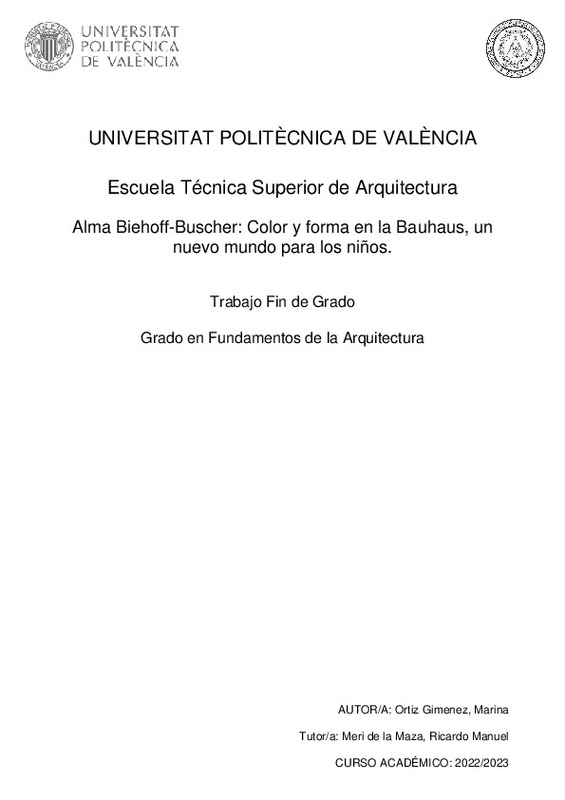JavaScript is disabled for your browser. Some features of this site may not work without it.
Buscar en RiuNet
Listar
Mi cuenta
Estadísticas
Ayuda RiuNet
Admin. UPV
Alma Biehoff-Buscher: Color y forma en la Bauhaus, un nuevo mundo para los niños.
Mostrar el registro completo del ítem
Ortiz Giménez, M. (2023). Alma Biehoff-Buscher: Color y forma en la Bauhaus, un nuevo mundo para los niños. Universitat Politècnica de València. http://hdl.handle.net/10251/199993
Por favor, use este identificador para citar o enlazar este ítem: http://hdl.handle.net/10251/199993
Ficheros en el ítem
Metadatos del ítem
| Título: | Alma Biehoff-Buscher: Color y forma en la Bauhaus, un nuevo mundo para los niños. | |||
| Otro titulo: |
|
|||
| Autor: | Ortiz Giménez, Marina | |||
| Director(es): | ||||
| Entidad UPV: |
|
|||
| Fecha acto/lectura: |
|
|||
| Resumen: |
[ES] La Bauhaus se caracterizó por un
enfoque revolucionario en el uso del color y
la forma en el diseño. Estos aspectos
jugaron un papel esencial en el desarrollo
del estilo y la estética. Debido a ello, la
escuela ...[+]
[EN] The Bauhaus was characterized by a revolutionary approach to the use of color and form in design. These aspects played an essential role in the development of style and aesthetics. Because of this, the multidisciplinary ...[+]
|
|||
| Palabras clave: |
|
|||
| Derechos de uso: | Reserva de todos los derechos | |||
| Editorial: |
|
|||
| Titulación: |
|
|||
| Tipo: |
|
recommendations
Este ítem aparece en la(s) siguiente(s) colección(ones)
-
ETSA - Trabajos académicos [4687]
Escuela Técnica Superior de Arquitectura







